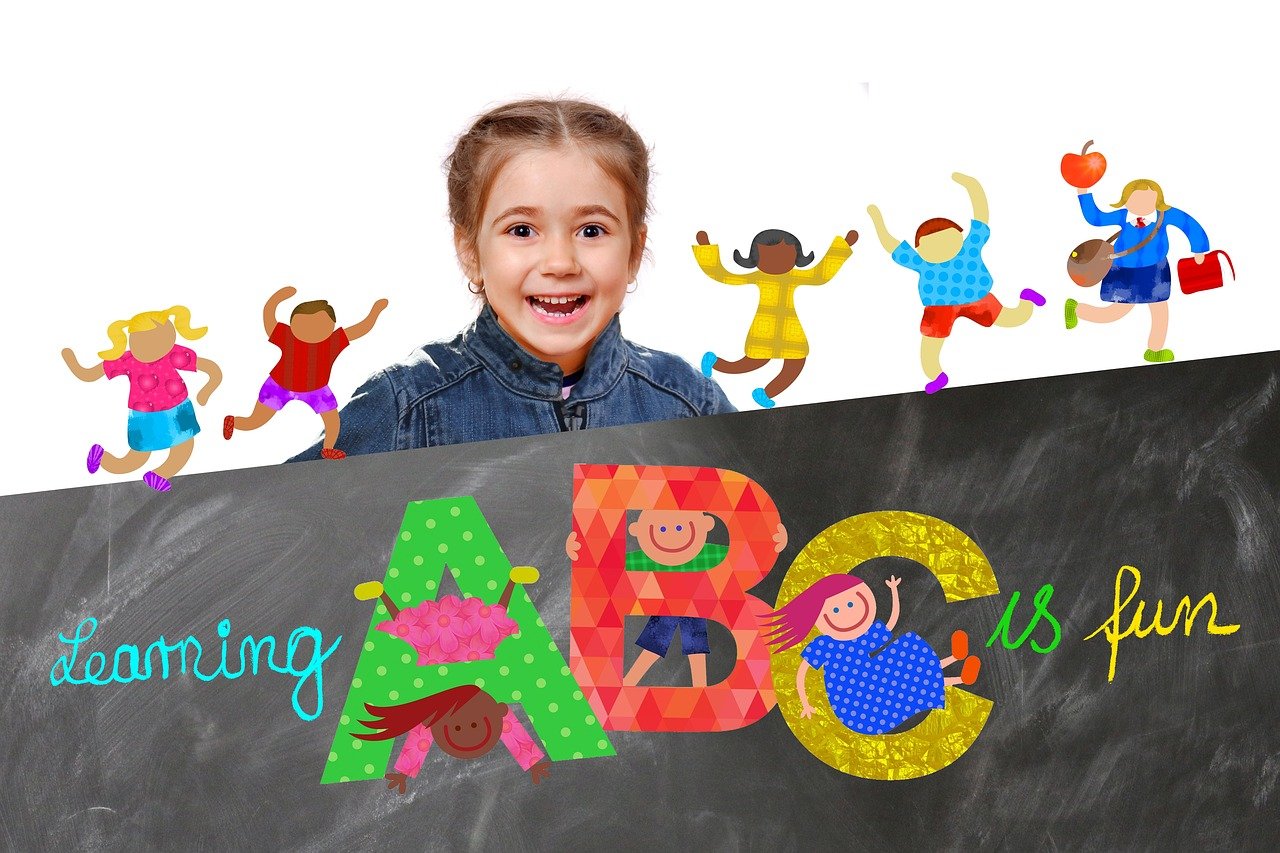15 Ch. 15 Treatment and Prevention of Crime
Jeff Bry
Ch. 15
Treatment and Prevention of Crime
Introduction
Throughout this textbook we have examined and discussed aspects of crime, specifically criminal behavior and its correlates. In this chapter we will explore approaches to address criminal behavior. The two main approaches this chapter will address include prevention of crime and treatment of crime. Prevention of crime focuses on risk factors of potential criminal behavior and addressing and hopefully reducing these risk factors. Treatment of crime focuses on known offenders and addressing deterring and/or treatment of the behaviors/issues that create crime for the individual.
“An ounce of prevention is worth a pound of cure.”
Benjamen Franklin.

Photo source pixabay.com
Use of Jail and Prison
Use of jail and prison often fits the model of just desserts and “justice” in our society. While jails and prisons serve a role, there is a significant social and economic cost associated with each. The estimated cost of Federal prison in 2020 was $37,449. State prisons vary significantly on a per inmate basis, with states such as California ($81,000) and New York ($69,000) being more expensive and states such as Arkansas ($23,000) and Alabama ($15,000) being far cheaper. Jail costs vary also, but a good average is around $100 per day per inmate. With federal, state and local jail costs, taxpayers pay in excess of 80 billion annually to incarcerate people.
Source: Prison Inside. https://prisoninside.com/how-much-does-the-government-spend-on-prisons-each-year/
This expense suggests the need for increased investment in prevention and treatment of offenders. Preventing people from committing crime in the first place seems very logical, with a direct tie to cost savings for society. Treating young offenders to address their issues before entering the adult criminal justice system, and/or treated adult inmates currently incarcerated should also result in significant savings for society. While use of jail and prison remain fairly popular as a response to crime, analysis of other options specifically prevention and treatment needs to be explored.
Prevention
There are numerous approaches to prevention of crime, not all of which are criminal justice-based programs. While these programs may be designed to address multiple issues (besides crime), they have been found to have a significant impact on crime as well. Blueprints for Healthy Youth Development https://www.blueprintsprograms.org/about/ is a repository for many of the most promising prevention programs across the country. This website highlights many promising and well-known prevention programs, including their outcome measures and statistics. Using the Blueprints for Healthy Youth Development, we will examine some of the most promising approaches to create healthy youth, with a focus on prevention of crime. Keep in mind some of these programs are designed to address other risk factors (such as healthy infants and toddlers), but they may have substantial impacts on crime also.
Youth Mentoring/Big Brother Big Sister Programs
Youth Mentoring has been around for decades, it takes a few forms and is used with various populations. Youth mentoring is one of the most consistently successful prevention programs available. Funding is consistently an issue with programs, mentoring has passed the “test of time” in terms of consistency and longevity. The most common approach (or at least most often considered) is pairing a prosocial adult with an “at-risk” youth. The term at-risk is fairly broad, but may include issues such as poverty, school issues, lack of positive male or female role models and early risky behavior such as shoplifting, truancy, etc. The basic concept of youth mentoring is to pair the at-risk youth with a positive, prosocial adult. This adult/youth relationship is about spending quality time together, which generally includes low-cost, no-cost activities the youth can continue once the relationship ends. Activities could include doing homework together, shooting baskets, being outside and exploring nature, or any other positive activity that people generally do together. The main focus of mentoring is to provide a positive adult for the youth to spend time with, build a positive relationship and learn from. Activities can be diverse and may depend on the interest level of the adult and the youth, but there is a strong focus on low cost to allow the activity to continue when the match ends. Teaching and modeling social skills, proper behavior in social settings and how to deal with conflict and peers are examples of issues potentially addressed in this relationship. Having a positive adult to ask questions of, interact with and share issues/concerns is also an important aspect of mentoring.

In a Student’s Own Words:
Question: Which prevention or treatment program did you find the most promising? What aspects of the program and/or outcomes did you appreciate?
“The Big Brothers- Big Sisters program caught my eye. I find this program promising mentoring kids and steering them out of trouble. This program’s positive effects on kids’ futures shocked me. Some of the positive impacts this program had on kids are a 46% reduction in drug use, 27% less alcohol use, fewer acts of violence, and better outcomes in academics, family engagement, attitudes, and performance.”
While youth mentoring does have a small cost to it (roughly $1,000 – $1,500 per mentee per year), the benefits are substantial and seem to far outweigh the cost. Selection and training of mentors is fairly time consuming and also may be somewhat expensive, including background checks and initial and ongoing training. As mentees are children and adolescents, safeguards must be put in place to ensure they are placed with a safe adult mentor.
According to youth.gov https://youth.gov/youth-topics/mentoring/benefits-mentoring-young-people there are many benefits of youth mentoring. Some of the most significant include:
-Increased high school graduation rates
-Lower high school dropout rates
-Healthier relationships and lifestyle choices
-Better attitude about school
-Higher college enrollment rates and higher educational aspirations
-Enhanced self-esteem and self-confidence
-Improved behavior, both at home and at school
-Stronger relationships with parents, teachers, and peers
-Improved interpersonal skills
-Decreased likelihood of initiating drug and alcohol use (MENTOR, 2009; Cavell, DuBois, Karcher, Keller, & Rhodes, 2009)
Annual Cost per Youth: The cost to support a single youth in the BBBS program is typically between $1,000 and $1,500 per year. This cost covers recruitment, training, and support of mentors, as well as ongoing supervision of the mentor-mentee relationship.
Citations:
Public/Private Ventures Study (1995): A study by Public/Private Ventures found that youth in BBBS programs were 52% less likely to skip school, 46% less likely to begin using illegal drugs, and 27% less likely to begin using alcohol compared to their peers.
Big Brothers Big Sisters of America: The national organization provides data on the effectiveness and cost of its programs, showing that every $1 invested in BBBS yields approximately $3 in benefits to society.

From Author Jeff Bry:
“Early in my career I worked at a private nonprofit in a management role. My duties involved program management and grant writing for a number of programs, one of which was a youth mentoring program. Part of my job was to provide initial training to youth mentors, as well as quarterly training throughout the year. We did pay our mentors a wage ($6-7 dollars an hour) and also provided paid training. Initial training was about 16 hours, while monthly staff meetings and quarterly training involved an additional 25-30 hours per year. This was a large obligation and was too much for some people. They really wanted to work with kids, but did not feel they could handle all of the initial and ongoing training. Some people would go through the initial training and decide the work was not for them, or some did not pass the background checks to be a mentor. My point is that mentoring is a very rewarding pursuit; but it takes a large commitment and a significant amount of dedication to be successful. In my experience, many mentors went on to careers in probation, education, human services etc. Others found that working with people (or perhaps children specifically) was not for them. In my opinion that is a good thing, as they could pivot their education and approach in a different direction before beginning a full-time position with kids.”

Picture source pixabay.com
Generation PMTO
Generation PMTO is a family training program designed to provide family management skills to reduce antisocial and problematic behavior in children. Generation PMTO is a group of theory based training interventions designed to improve parenting, that can be implemented in a variety of family contexts. Programming is designed to teach effective parenting and family management skills with the intent to reduce antisocial and problematic behavior in kids ages 3-16. This programming is delivered in individual and group formats, with programming provided in diverse environments (homes, schools, clinics, homeless shelters, churches, etc.). Length and duration of programming depends upon the needs of the family, including spacing of programming to allow families to practice what they are learning.
The focus of Generation PMTO is to teach and coach parents in effective parenting, including limit setting and discipline, effective parenting strategies, skill encouragement, monitoring, problem solving, and creating a positive environment. Outcomes of the program include:
-Reductions in coercive parenting and negative reinforcement at posttest
-Increases in positive parenting, effective parenting practices, and adaptive functioning at posttest
-Decreases in boys’ noncompliance at posttest
-Reduced maternal depression and child internalizing and externalizing at 30-month follow-up
-Reductions in poverty and greater rise out of poverty at 30-month follow-up
-Lower levels and lower growth in teacher-rated delinquency at nine-year follow-up
-Reductions in average levels (but not growth) of deviant peer association
-Lower rates of arrest and delayed age at first arrest at nine-year follow-up
-Lower rates of police arrests among mothers at nine-year follow-up
-Increases in socioeconomic status levels among mothers at nine-year follow-up
Program Benefits (per individual): $2,475
Program Costs (per individual): $1,352
Net Present Value (Benefits minus Costs, per individual): $1,123
Measured Risk (odds of a positive Net Present Value): 69%
Source: Washington State Institute for Public Policy
All benefit-cost ratios are the most recent estimates published by The Washington State Institute for Public Policy for Blueprint programs implemented in Washington State. These ratios are based on a) meta-analysis estimates of effect size and b) monetized benefits and calculated costs for programs as delivered in the State of Washington. Caution is recommended in applying these estimates of the benefit-cost ratio to any other state or local area. They are provided as an illustration of the benefit-cost ratio found in one specific state. When feasible, local costs and monetized benefits should be used to calculate expected local benefit-cost ratios. The formula for this calculation can be found on the WSIPP website.
Life Skills Training (LST)
Life Skills Training (LST) is a universal prevention program designed to be delivered at the middle school level targeting use of gateway drugs (alcohol, tobacco, marijuana) and also violence. LST is a three-year prevention program, providing youth with skill sets in personal self-management, social skills and refusal/social resistance skills. LST provides 15 “core” sessions in the first year, ten books sessions in the second year and five boosters in the third year. Optional violence prevention sessions are also available each year, three sessions in year one, two sessions in year two and three. Sessions are provided by classroom teachers. Each unit in the curriculum has a major goal, measurable student objectives, lessons and classroom activities. The overarching goal of LST is to provide skill training for overall competence and concentration on refusal/resistance skills to resist pressure to drink, smoke or use illicit drugs. Personal Self-Management Skills components provide skill building in examining self-image and how it effect behavior, everyday decision making, goal setting and progress, problem situations and methods to reduce stress and anxiety.
LST instructors use interactive teaching approaches to deliver the messaging, including demonstration and behavioral rehearsal. Providing honest feedback and reinforcement approaches in and out of the classroom are encouraged also. Year two and three of programming are provided as reinforcers to year one of programming. As the students age and grow (and challenges may change and/or increase), programming and skills are cited to address current issues students may be facing. Outcomes of the program include:
-Reduced cigarette smoking at posttest,
-Reduced cigarette smoking and marijuana use at the three-year follow-up,
-Reduced polydrug use at the 6.5-year follow-up.
-Reduced delinquency at posttest,
-Reduced frequent fighting at posttest.
-Lower substance use initiation at 1.5 years after baseline,
-Lower cigarette initiation at 5.5 years after baseline,
-Slower growth rates in cigarette initiation and drunkenness at 5.5 years after baseline.
Program Benefits (per individual): $1,419
Program Costs (per individual): $105
Net Present Value (Benefits minus Costs, per individual): $1,314
Measured Risk (odds of a positive Net Present Value): 63%
Source: Washington State Institute for Public Policy
All benefit-cost ratios are the most recent estimates published by The Washington State Institute for Public Policy for Blueprint programs implemented in Washington State. These ratios are based on a) meta-analysis estimates of effect size and b) monetized benefits and calculated costs for programs as delivered in the State of Washington. Caution is recommended in applying these estimates of the benefit-cost ratio to any other state or local area. They are provided as an illustration of the benefit-cost ratio found in one specific state. When feasible, local costs and monetized benefits should be used to calculate expected local benefit-cost ratios. The formula for this calculation can be found on the WSIPP website.
Multisystemic Therapy (MST)
Multisystemic Therapy (MST) is a robust family and community-based treatment that examines and addresses multiple causes of serious antisocial behavior in youth offenders. MST focuses on improving the real-world functioning of young offenders by making changes to their natural environments, including school, home and their neighborhood. The approach concentrates on reducing antisocial behavior while improving prosocial behavior and their attributes. Therapy is provided to youth and their families to address the causes of delinquency on a comprehensive, individualized basis. Utilizing the strengths of each system (school, family, neighborhood) to enact change, MST addresses the many factors that are causative to delinquency across each of the key systems the youth are affected by. According to the needs of the youth and their family therapy is varied and amended. Therapy sessions are more intense at the start of treatment (daily if needed), then begin to taper off (perhaps as infrequently as one meeting a week) over the course of the treatment (3-5 months). Program outcomes include:

-Decreased youth behavior problems
-Improved family relations
-Lower recidivism rates (re-arrested at least once) through 4-year follow-up.
-Decreased youth internalizing symptoms
-Increased social competence
-Decreased out-of-home placements.
-Reduced externalizing problems
-Reduced absenteeism in school.
-Reduced externalizing
-Reduced oppositional defiant disorder
-Reduced conduct disorder
-Reduced property offenses
-Increased relationship quality.
-Reduced aggression and delinquency at posttest
-Reduced psychopathic traits at posttest
-Reduced nonviolent offenses at the 18-month follow-up assessment.
Program Benefits (per individual): $25,554
Program Costs (per individual): $8,471
Net Present Value (Benefits minus Costs, per individual): $17,083
Measured Risk (odds of a positive Net Present Value): 99%
Source: Washington State Institute for Public Policy
All benefit-cost ratios are the most recent estimates published by The Washington State Institute for Public Policy for Blueprint programs implemented in Washington State. These ratios are based on a) meta-analysis estimates of effect size and b) monetized benefits and calculated costs for programs as delivered in the State of Washington. Caution is recommended in applying these estimates of the benefit-cost ratio to any other state or local area. They are provided as an illustration of the benefit-cost ratio found in one specific state. When feasible, local costs and monetized benefits should be used to calculate expected local benefit-cost ratios. The formula for this calculation can be found on the WSIPP website.

In a Student’s Own Words
Question: Which prevention or treatment program did you find the most promising? What aspects of the program and/or outcomes did you appreciate?
“Some of the programs that really spoke to me were the Multisystemic Therapy (MST) program and Nurse-Family Partnership program. The Multisystemic Therapy program is a juvenile crime prevention program made to improve a child’s natural environment while simultaneously decreasing anti-social behavior. I believe that providing support and treatments as young as possible can play a part in preventing specific behaviors. This program targets children between the ages of 12 to 18, where kids and teenagers are the most impressionable. I share similar reasonings for both programs. The Nurse-Family Partnership can be a great support for mothers, and can help prevent child abuse or neglect.”
Family Foundations
Family Foundations is a prevention program with foundational principles in childbirth education that is designed to enhance coparenting quality among couples expecting their first child. The program is designed to run once a week with each two-hour session administered to groups of 6-10 couples. Programming includes four prenatal and four postnatal sessions. Sessions are facilitated by a male-female team of trainers and utilize the Family Foundations curriculum. The female educators are childbirth educators and male leaders have diverse experience including training and work with families and leading groups.
Programming focuses on coparenting approaches and relationships of coparents, rather than romantic relationships or parenting qualities. Programming concentrates on helping parents to learn to work supportively, consistently addressing conflict management, problem solving, emotional self-management, communication and mutual support strategies. Parenting approaches including understanding and promoting attachment, children’s self-regulation and understanding temperament in their children. The four prenatal classes provide insight to the couples regarding themes and skills, while the four postnatal classes provide follow up information to the themes once the couples have experience as parents and coparents. Delivery methods are psychoeducational and skills-based, providing presentations, written worksheets, videotaped vignettes of other families and group discussions. Couple communication and skills are a very important component of these trainings. Outcomes include:
-Fathers’ coparental support, parenting-based closeness, and parent-child dysfunctional interaction
-Mothers’ coparental support, depressive symptoms, and anxiety
-Father-reported infant soothability
-Child duration of orienting
-Mothers’ coparenting competition, coparenting triangulation, warmth to partner, parenting positivity, coparenting inclusion, and negative communication
-Fathers’ coparenting competition, coparenting triangulation, warmth to partner, parenting positivity, coparenting warmth, and parenting negativity
-Observed child self-soothing
-Parent-reported parental stress, parental efficacy, coparenting quality, parenting overreactivity, parenting laxness, and physical punishment
-Mother-reported child total behavior problems, externalizing problems, aggression, and social competence
-Mother-reported child internalizing problems and attention/hyperactivity (boys only)
-Greater observational family interaction and co-parenting at posttest and long-term follow-up
-Less parent-reported family violence at posttest
-Greater parent-reported child soothability, duration of orientation (i.e., attention span), and night-time sleeping at posttest
-Fewer parent-reported child internalizing behaviors at long-term follow-up
-Fewer parent-reported child nighttime wakings at long-term follow-up
-Higher observer-rated positive affect and lower negative affect at seven-year follow-up
-Lower observer-rated physical aggression toward objects at seven-year follow-up
-Greater observer-rated affection for mothers and fathers at seven-year follow-up
-Lower teacher-rated externalizing at seven-year follow-up
-No specific cost/benefit analysis is provided for this program.
ParentCorps
ParentCorps is a program designed for pre-kindergarten students in schools and educational centers. These students are primarily from low-income communities and are children of color. The program is designed to assist important adults in the children’s lives (especially parents, caregivers and teachers) to create safe, secure, nurturing and predictable environments at home and in the classroom for the children. These important adults are also taught relational and communication approaches, especially between the parents and the teachers. The delivery of ParentCorps includes three main components; a parenting program for the families and their pre-kindergarten students, professional learning for pre-kindergarten teachers and support staff and a social-emotional learning curriculum (classroom based) for the pre-kindergarten students. Program outcomes include:
-Improved Teacher-rated child behavior problems composite (internalizing, externalizing, and overall adaptive behavior)
-Improved self-rated effective parenting practices
-Higher standardized test scores at the end of kindergarten
-Higher teacher-rated academic performance at the end of second grade
-Improved teacher-rated child internalizing and externalizing problems at the end of second grade
-Parent and teacher-rated effective parenting practices at the end of kindergarten
-No specific cost/benefit analysis is provided for this program.

Picture source Pixabay.com
The Nurse-Family Partnership (NFP)
The Nurse-Family Partnership (NFP) is a program that begins extremely early, beginning during pregnancy and continues through the child’s second birthday. Nurses work with low-income expectant mothers who are having their first child. The focus of the program is to improve the outcomes of pregnancy, improve the development and health of the child and also improve the mother’s life-course development through skill building and assistance from the nurse during home visits. The visits are generally once every two weeks lasting 60-90 minutes, the nurses are available for phone consultation as needed by the mother.
Aspects of the program include better prenatal care and nutrition for the mother, while also working to reduce or eliminate harmful substances such as cigarettes, drugs and alcohol. Skill building in areas such as the stages of pregnancy (including normal body and other changed) that accompany pregnancy. Other instruction specific to appropriate well-being and exercise, rest and good personal hygiene related to obstetrical health are also provided by the nurse to the expectant mother. The nurse also supports the expectant mother by preparing her for labor, delivery and methods to care for the newborn. Once the baby is born the nurse assists and mentors the mother on proper approaches to care for and support her new baby. These approaches may address issues with breastfeeding, how to properly clean and care for her baby, what and when to feed her child solid foods, how to respond when her child is sick, also appropriate limit setting and parenting approaches. As these mothers may lack a formal and informal support system other women enjoy, the nurse becomes a vital mentor and in some sense partner in the raising of her child. As the child grows and changes, the nurse plays a vital role in assisting mom with changes to her child and methods to provide what her child needs to thrive and be successful. Outcomes of the program include:
-Less unintended subsequent pregnancies, and the interval between first and second births
-Less domestic violence among married or cohabiting women
-Increased maternal employment and use of welfare and food stamps
-Less health-care visits and hospitalization for injuries and illnesses for child
-Less emotional vulnerability, particularly among children born to mothers with low psychological resources
-Improved language and mental development, particularly among children born to mothers with low psychological resources
-Less child abuse and neglect, and behavioral problems caused by use of alcohol or drugs
-Improved intellectual functioning and receptive to language (child)
-Less behavioral problems at age 6
-Improved relationship quality of mothers with current partners
-Less children’s use of substances and internalizing mental health problems at age 12
-Among children, less arrests and convictions
-Improved prenatal health, such as hypertension and use of cigarettes
-Improved responsive interactions with child
-Improved parent social support
Program Benefits (per individual): $16,993
Program Costs (per individual): $12,437
Net Present Value (Benefits minus Costs, per individual): $4,556
Measured Risk (odds of a positive Net Present Value): 64%
Source: Washington State Institute for Public Policy
All benefit-cost ratios are the most recent estimates published by The Washington State Institute for Public Policy for Blueprint programs implemented in Washington State. These ratios are based on a) meta-analysis estimates of effect size and b) monetized benefits and calculated costs for programs as delivered in the State of Washington. Caution is recommended in applying these estimates of the benefit-cost ratio to any other state or local area. They are provided as an illustration of the benefit-cost ratio found in one specific state. When feasible, local costs and monetized benefits should be used to calculate expected local benefit-cost ratios. The formula for this calculation can be found on the WSIPP website.

From Author Jeff Bry:
“Before beginning my full-time teaching career, my last position was as Health Promotion and Protection Director for a county Public Health department. One of the programs we offered was a family home visiting program that was part of the Nurse-Family Partnership program. I learned much from the nurses who worked in this program, one of the things that most sticks out to me is how dedicated they were to their clients. Many of these clients were young single women without much resources, not much assistance or help from parents or other people in their lives. These nurses became surrogate mothers to these young women, answering numerous questions about delivery, what to do when the baby had a fever, breastfeeding and a variety of other issues. They also provided assistance regarding writing a resume, applying and interviewing for employment, they were also a listening ear when their clients needed it. This is an excellent program with substantial tangible outcomes, as well as intangible outcomes that seem as beneficial.”
Positive Action
Positive Action (PA) is a program incorporated in the schools that attempts to bring about school-wide climate change and provides a detailed curriculum. Programming is provided 2-4 times per week with approximately 140 15 minute lessons for students in grades K-6 and 82 15-20 minute sessions for grades 7 and 8. Lessons are specific and scripted for each grade level, all material are provided to teach the curriculum including posters, music, games, puppets, and other lesson materials. Students are also provided with journals, activity books and other lesson aids. Content for the program is included in six units and they are the background of the program. The first unit teaches the basic philosophy of the program and the Thoughts-Actions-Feelings about Self Circle for the groups. Instruction is provided to the basics of the nature and issues of positive and negative actions/behaviors and their consequences. Units 2-6 teach the positive actions for the social, emotional, physical and intellectual areas. There are two school-wide climate development kids (one for elementary, one for secondary) and a counselor’s kit. The information provided through the climate development and counselor kits provide reinforcement to the classroom curriculum by allows the entire school to coordinate efforts and messaging, while also reinforcing positive actions. Outcomes of the program include:
-Improved school supportiveness
-Improved school quality at one-year post-intervention.
-School-wide reductions in grade retention, suspensions and absenteeism and school-wide improvements in reading and math after three program years, and these results were maintained through one-year post-implementation
-Lower likelihood at fifth grade to have engaged in self-reported substance use, violence, and sexual activity.
-Better youth social interaction skills
-Higher socio-emotional and character development at grades 5 and 8
-Lower self-reported substance use at grades 5 and 8
-Lower self-reported violence at grades 5 and 8, lower parent-reported bullying at grade 8, and lower self-reported bullying at grades 5 and 8
-Lower depression and anxiety at grade 8
-Lower unhealthy food consumption at grade 8
-Lower school-level disciplinary referrals and suspensions at grade 8
-Better reading test scores at grade 8.
-Lower disaffection with learning and higher teacher-rated academic motivation at grade 8
-Lower normative support for aggression at grade 8
-Higher life satisfaction at grade 8
-Better social interaction skills
-Higher school and peer self-esteem at grade 8.
Program Benefits (per individual): $31,159
Program Costs (per individual): $1,063
Net Present Value (Benefits minus Costs, per individual): $30,096
Measured Risk (odds of a positive Net Present Value): 94%
Source: Washington State Institute for Public Policy
All benefit-cost ratios are the most recent estimates published by The Washington State Institute for Public Policy for Blueprint programs implemented in Washington State. These ratios are based on a) meta-analysis estimates of effect size and b) monetized benefits and calculated costs for programs as delivered in the State of Washington. Caution is recommended in applying these estimates of the benefit-cost ratio to any other state or local area. They are provided as an illustration of the benefit-cost ratio found in one specific state. When feasible, local costs and monetized benefits should be used to calculate expected local benefit-cost ratios. The formula for this calculation can be found on the WSIPP website.
Treatment
Treatment Foster Care Oregon (TFCO)
Treatment Foster Care Oregon (TFCO) is an alternative and cost-effective option to group and residential treatment, detention and other forms of incarceration and hospitalization for adolescents who have chronic problems/issues. These problems generally include issues such as chronic antisocial behavior, emotional disturbances and delinquency. Families are recruited in communities to provide this service, although selection and training are fairly intense. Families are recruited, trained and closely supervised to provide TFCO services, where adolescents are placed in their homes to remain members of the community. While these adolescents may have enhanced personal and psychological issues, extensive training and resources are provided to the families that provide this service. Families are provided extensive training to provide clear and consistent limits with follow-through of consequences. Families are also taught to use positive reinforcement for appropriate behavior and to provide a mentoring relationship with the adolescent. Positive peers and peer environments are also stressed in the training, to provide supervision and mentoring of positive behavior and outcomes. TFCO uses a behavioral modification program based upon a three-level point system with structured daily feedback. As youth earn points, they are given more freedom and autonomy from adult supervision. Individual and family therapy is also provided, case managers assist the families with providing this service and provide supervision and support through daily phone calls and weekly foster parent group meetings.

In a Student’s Own Words:
Question: Which prevention or treatment program did you find the most promising? What aspects of the program and/or outcomes did you appreciate?
“The Treatment Foster Care Oregon program caught my eye the most. This program is described as a therapeutic foster care program to reunite families and reduce delinquency and teen violence. The program also increases prosocial behavior and participation in prosocial activities through behavioral parent training and support for foster parents, family therapy for biological parents, skills training and supportive therapy for youth, and school-based behavioral interventions and academic support. This program stuck out to me because it appears to have good morals and has an overall great goal. Teens in the foster care program are statistically more likely to lead lives of crime and delinquency because of the trauma and difficult background they come from. This program’s goal, to offer therapeutic sessions to reduce teen violence and delinquency, seems like a great thing for any teens in the foster care program. Also, the fact that the program aims to reunite families is amazing. The program seems great for reducing current crime and delinquency in teens and the likelihood of it happening in the future.”
There is a learning emphasis on teaching the adolescent social and interpersonal skills and encouragement to participate in sports, leisure activities and hobbies. Placement in the foster homes in generally for about six months. Aftercare services remain in effect for as long as the parents wish, but usually last about a year. Outside of the benefits of living in a therapeutic setting, living in a home with a family is also a very large benefit. The adolescent gets to be part of a family, attend a local school and participate in all a community has to offer. This is generally a stark contrast to living in a treatment facility or in an institutional setting. Outcomes of this program include:
-fewer days in locked settings at 12 months post-baseline
-fewer criminal referrals at 12 months post-baseline
-lower caregiver-reported delinquency at 12 months post-baseline-
-more time spent on homework at 12 months post-baseline
-fewer days spent in locked settings at 24-months
-fewer criminal referrals at 24-months
-and lower self-reported delinquency at 24-months.
-lower negative peer influence and frequency of problem behaviors at three months
-more time living with parents or relatives, fewer arrests, and fewer criminal activities at 12 months
-lower use of tobacco, marijuana, and other drugs at 18 months
-lower violent offending at 24 months.
-fewer pregnancies through 24 months
-lower substance use through 24 months
-lower depression and psychiatric symptoms through 24 months
-lower depressive symptoms and arrests in young adulthood.
Program Benefits (per individual): $40,561
Program Costs (per individual): $9,443
Net Present Value (Benefits minus Costs, per individual): $31,118
Measured Risk (odds of a positive Net Present Value): 93%
Source: Washington State Institute for Public Policy
All benefit-cost ratios are the most recent estimates published by The Washington State Institute for Public Policy for Blueprint programs implemented in Washington State. These ratios are based on a) meta-analysis estimates of effect size and b) monetized benefits and calculated costs for programs as delivered in the State of Washington. Caution is recommended in applying these estimates of the benefit-cost ratio to any other state or local area. They are provided as an illustration of the benefit-cost ratio found in one specific state. When feasible, local costs and monetized benefits should be used to calculate expected local benefit-cost ratios. The formula for this calculation can be found on the WSIPP website.
Multisystemic Therapy-Problem Sexual Behavior
Multisystemic Therapy (MST) is an intensive and specific family and community-based treatment approach that seeks to address the causative elements of serious antisocial behavior across the key systems which adolescents are embedded (family, school, peers, neighborhood). MST for sexual offenders (MST-PSB) provides a focus on elements of an adolescent’s social environment that are functionally related to the problem sexual behavior, including reduction of parent and youth denial about the sexual offenses and their consequences. MST-PSB also promotes the development of friendships and age-appropriate sexual experiences. MST-PSB also promotes changing and modification of the adolescent’s belief system, perspective-taking skills and attitudes that may have contributed to sexual offending. The MST-PSB approach is modified to each individual family, which includes family therapy for each family. The adolescent is also provided individual therapy for a period of 5-7 months. Therapists have 3-5 families on their caseloads and a rotation of the care team is available to respond to issues 24 hours a day, seven days a week. Outcomes of this program include:
-less rearrests for sexual crimes (12.5% vs. 75%)
-reduced mother, father and youth psychiatric symptoms
-reduced youth behavior problems
-improved family functioning
-improved peer relationships
-improved school grades
-less person and property crimes
-significantly less arrests for any crimes, sexual crimes, and non-sexual crimes
-significantly less days in detention facilities, incarceration, and on probation
-significantly less family civil suits relating to family instability
-significantly less deviant sexual interests and risk
-significantly less delinquency at 18 and 24 months
-significantly less substance use
-significantly less youth-reported externalizing
-significantly less out-of-home placement
Program Benefits (per individual): $22,991
Program Costs (per individual): $14,794
Net Present Value (Benefits minus Costs, per individual): $8,197
Measured Risk (odds of a positive Net Present Value): 59%
Source: Washington State Institute for Public Policy
All benefit-cost ratios are the most recent estimates published by The Washington State Institute for Public Policy for Blueprint programs implemented in Washington State. These ratios are based on a) meta-analysis estimates of effect size and b) monetized benefits and calculated costs for programs as delivered in the State of Washington. Caution is recommended in applying these estimates of the benefit-cost ratio to any other state or local area. They are provided as an illustration of the benefit-cost ratio found in one specific state. When feasible, local costs and monetized benefits should be used to calculate expected local benefit-cost ratios. The formula for this calculation can be found on the WSIPP website.
Drug Courts Baltimore City
The Baltimore City Drug Treatment Court is a drug court designed for district and circuit court cases that are under the auspices of the Baltimore City Division of Parole and Probation. In terms of adjudication, District Court cases handle misdemeanor charges, the Circuit Court handles felony cases. In each court tracks of entry into the Drug Court occur post-conviction. In summary clients enter the program generally as a condition of their probation. During the evaluation phase of the Drug Court, clients may also be assigned based upon pre-conviction (diversion) methods. If such is the case, clients typically enter the program conditionally, if they successfully complete the program their charges will be dropped.
Drug Court participants must be at least 18 years old, live in Baltimore City and must not have any prior or current violent offenses. Public defenders make defendants aware of the availability of drug courts, while the state’s attorney ensures client eligibility and meets with public defenders to ascertain which clients would be best served by the Drug Court. Clients assigned to the Drug Court complete both the Psychopathy Checklist and the Addiction Severity Index. Additionally, information is collected about each client’s medical history, drug history, employment history and status, and aspects of family and social relationships. The Drug Court judge makes the final decision regarding which clients are accepted into the program and which are not.
Drug Court programming includes intensive supervision as well as drug testing, treatment and judicial monitoring over a period of two years. Probation officers work closely with participants and conduct two home visits per month and at least three visits outside the home per month. Drug Court clients must also provide verification of employment once a month. As clients move through the phases of the drug court, supervision and drug testing becomes less frequent. Most clients (who successfully finish the program) do so after a period of two to three years. Clients also receive substance abuse treatment based upon their needs. These treatment approaches include outpatient counseling, methadone maintenance, inpatient care and transitional housing.
Judicial status hearings are held to allow a Drug Court judge to follow and track a client’s progress. Hearings are held once every two weeks and include sanctions from the judge for noncompliance and/or lack of progress or effort with their treatment. Sanctions include increased status hearings, drug screenings and probation visits. An example of a severe sanction is probation revocation, where the client is institutionalized. Program outcomes include:
-Reduced likelihood of rearrest, in interim
-Reduced number of new arrests and new charges, at 12-year follow-up
No data is available regarding the cost/benefits of the program.
Functional Family Therapy (FFT)
Functional Family Therapy (FFT) is a short-term family based therapeutic program for delinquent youth who are at significant risk of institutionalization. The program also involved the youth’s families. FFT is centered around improving within-family communication, attributions, and supportiveness, while working to decrease dysfunctional patterns of behavior and negativity. Each family is assessed for risk and given a protective family profile, while programming targets youth compliance, parenting skills, and a wide-reaching arena of cognitive, emotional and behavioral domains.
Based upon the therapeutic nature of the program, it is crucial FFT be implemented by a team of 3-8 Master’s level therapists, consisting of caseloads of 10-12 families. These therapists should be supervised by a licensed clinical therapist. Program outcomes include:
-Reduced new drug charges
-Reduced delinquent adjudications
Program Benefits (per individual): $11,282
Program Costs (per individual): $4,084
Net Present Value (Benefits minus Costs, per individual): $7,197
Measured Risk (odds of a positive Net Present Value): 72%
Source: Washington State Institute for Public Policy
All benefit-cost ratios are the most recent estimates published by The Washington State Institute for Public Policy for Blueprint programs implemented in Washington State. These ratios are based on a) meta-analysis estimates of effect size and b) monetized benefits and calculated costs for programs as delivered in the State of Washington. Caution is recommended in applying these estimates of the benefit-cost ratio to any other state or local area. They are provided as an illustration of the benefit-cost ratio found in one specific state. When feasible, local costs and monetized benefits should be used to calculate expected local benefit-cost ratios. The formula for this calculation can be found on the WSIPP website.
Summary
While use of jail and prison remain popular approaches to dealing with crime, prevention and treatment offer a substantial cost savings and “hope” for prevent and reduce delinquency and crime. The programs and approaches discussed in this chapter have been found to be “best practices” in terms of preventing and treating criminal behavior. While not each of these programs are specifically crime programs, their approaches provide multiple benefits in terms of treatment and prevention of crime. We will summarize the chapter with a discussion and analysis of the pitfalls or limitations of funding.
Reality of “Grant Funded” programming:
A sad reality of “grant funded” programming is it generally (or eventually) will run out. While some programs like youth mentoring have longitudinal success in terms of funding, often very promising or successful programs will “die on the vine.” Programs that are tied to “soft” funding such as grant dollars are in competition with other programs each competitive grant cycle. While some programs have excellent returns and provide needed services, grant funding organizations are not generally in the business of supporting programs indefinitely. There is pressure to find other funding sources; including local, county, state and/or federal funding sources. Finding permanent (or semi-permanent) funding from these sources may be very difficult, as government agencies may also be hesitant to fund programming indefinitely.
As new programs emerge or are redesigned, they also deserve a seat at the table for funding. This creates a reality for a majority of programs that once funded, they must start thinking/looking for other revenue streams or the program will potentially go away once the initial funding ends. A higher investment in treatment and prevention programs at every level of government would alleviate some of these concerns, allowing successful programs to have better longevity and consistency.
References
Blakely, C. H., Menon, R., & Jones, D. J. (1995). Project BELONG: Final report. College Station, TX: Texas A&M University, Public Policy Research Institute. (PDF, 2 pages)
Cavell, T., DuBois, D., Karcher, M., Keller, T., & Rhodes, J. (2009). Strengthening mentoring opportunities for at-risk youth. Retrieved from http://www.mentoring.org/downloads/mentoring_1233.pdf
(PDF, 4 pages)
Jekielek, S., Moore K. A., & Hair, E. C. (2002). Mentoring programs and youth development: A synthesis. Washington, DC: Child Trends. Retrieved from http://www.mentorwalk.org/documents/mentoring-synthesis.pdf
(PDF, 68 pages)
Herrera, C., Grossman, J. B., Kauh, T. J., Feldman, A. F., McMaken, J., & Jucovy L. Z. (2007). Making a difference in schools: The Big Brothers Big Sisters school-based mentoring impact study. Public/Private Ventures. Retrieved from http://files.bigsister.org/file/Making-a-Difference-in-Schools.pdf
(PDF, 148 pages)
LoSciuto, L., Rajala, A. K., Townsend, T. N., Taylor, A. S. (1996). An outcome evaluation of across ages: An intergenerational mentoring approach to drug prevention. Journal of Adolescent Research, 11(1), 116-129.
MENTOR. (2009). Elements of effective practice in mentoring. Third Edition. Retrieved from http://www.mentoring.org/downloads/mentoring_1222.pdf
(PDF, 20 pages)
Rhodes, J. & DuBois, D.L. (2006) Understanding and facilitating youth mentoring. Social Policy Report: Giving Child and Youth Development Knowledge Away. Retrieved from http://www.srcd.org/sites/default/files/documents/20-3_youth_mentoring.pdf
(PDF, 20 pages)
Tierney, J. P., Grossman, J. B., & Resch, N. L. (1995). Making a difference: An impact study of Big Brothers Big Sisters. Public/Private Venture. (PDF, 71 pages)
U.S. Department of Labor. Office of Disability Employment Policy. (n.d.). Cultivating leadership: Mentoring youth with disabilities. Retrieved from http://www.dol.gov/odep/pubs/fact/cultivate.htm
